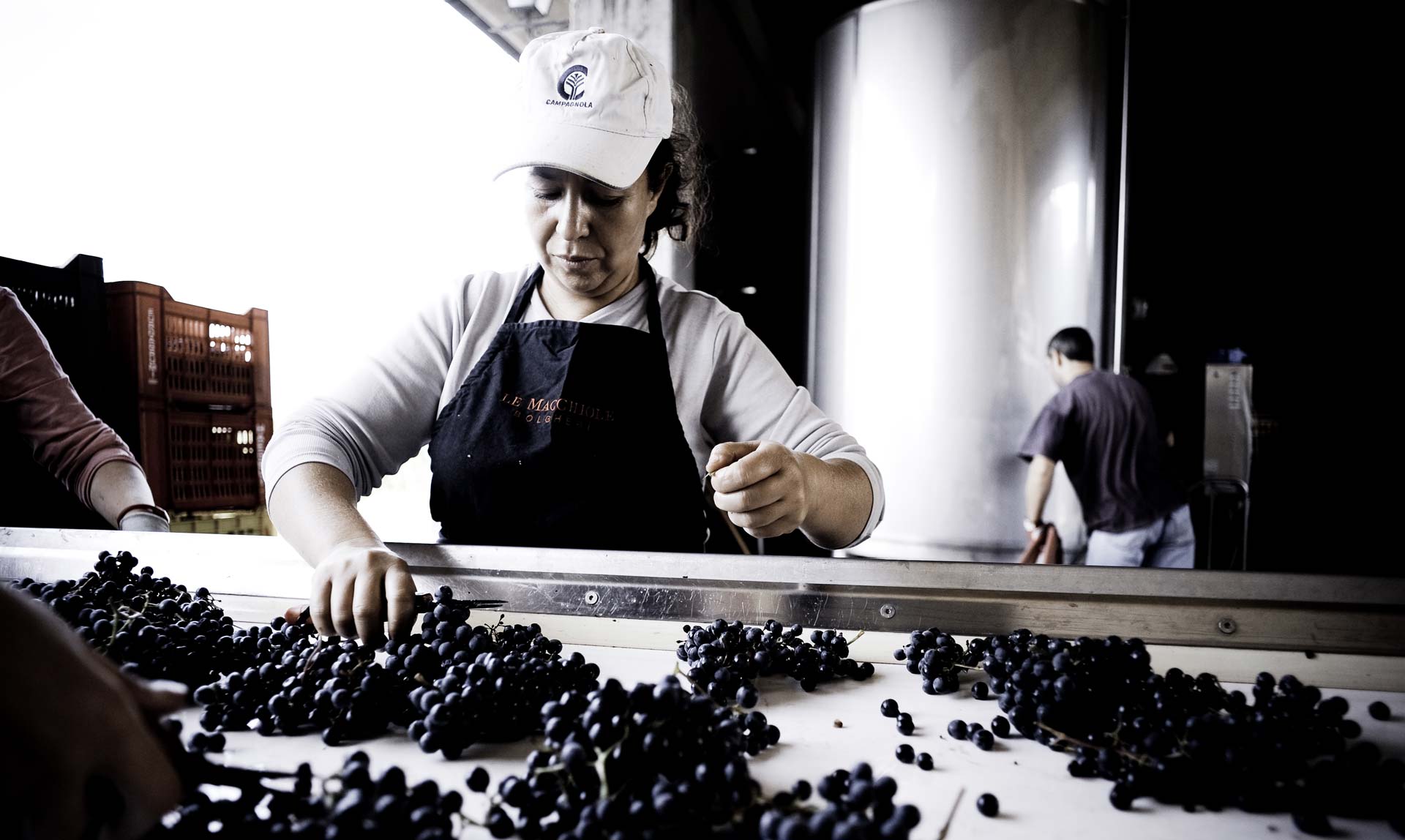The wines of Le Macchiole
Posted on 10 August 2012
A box of tasting samples is always something to look forward too. But when the samples come from Le Macchiole, a celeb winery on the Tuscan coast, the excitement is huge. Especially that it’s a winery I could never make up my mind about.
Le Macchiole was founded in 1983 by Eugenio and Cinzia Campolmi. The 22 hectares of vines rub shoulders with Ornellaia. Quality ambitions soared in the late 1980s and since 1991, consultant Luca d’Attoma was responsible for the introduction of Syrah, increase in planting density and a very concentrated, dense style.
The only time I met Mr. Campolmi was in 2001 when we happened to be visiting Romano Dal Forno in Valpolicella on the same day (and hearing what bottles were to be poured, I do regret not having been invited to the lavish lunch afterwards). Mr. Campolmi sadly passed away in 2002; the estate has since been run by his widow Cinzia Merli. I only got to taste Le Macchiole wines in 2007. Briefly put, I was underwhelmed. These were monster wines, huge competition-style beasts with incredible concentration, but I just couldn’t digest their overextraction and the absolutely massive amounts of oak (the 122-liter demi-barrique was in use). They were physically difficult to taste, to me: probably the same factor that made them score so high in the American press.
Time goes by, Le Macchiole continued its gold rush in the American press (including a juicy RP97 and WS100 for the 2006 Messorio), but slowly there were signs of change. The 2004 vintage was more human and drinkable than ever in the past; a bottle of Paleo I tasted at a friend’s place was very rich and modern but impressive nonetheless.
After another few years a in-depth look at these wines was really interesting. First there’s the entry-level bottling labelled simply as 2010 Bolgheri Rosso. A blend of 50% Merlot with Cabernet and Syrah, this sees no new oak and consequently shows none at all. But upon opening it is a fairly bretty wine. Now brett is something I don’t mind in proportion, and this wine wasn’t aggressive – there’s plenty of fruit too – but somewhat sounded a bit old-styled because nowadays winemakers tend to be very conservative about any amount of those horse-sweaty, savoury aromas. I guess that’s the Syrah element dominating the bouquet here, because there is also a bitter white pepper spiciness that’s nothing you’d expect from Merlot or Cabernet. With good acidity and quite some weight this is a good wine, virile, assertive, although after some airing when the horse-like aromas blow off, I thought this was a wee it heavy and extracted.
The 2008 Messorio could be Le Macchiole’s most famous bottling and it’s a 100% Merlot (from vineyards between 9 and 15 years old). The new oak has been reduced to 75% new, and in fact the primary characteristic is not oak but the wine’s massive concentration (no wonder with 900g of fruit / plant only, at 10K vines / hectare). In the hot 2008 vintage this wine reaches 14.5% alc. on the label, which is OK, but there is an obvious element of overripeness that actually gets worse with airing time, becoming pruney and alcoholic. As many of these slightly overripe red wines, this doesn’t hold terribly well to oxidation, and IMHO is best enjoyed straight after opening, when the concentrated, dark-fruity, layered intensity is at its most impressive. And impressive it is, even if like me you’re skeptical about the style. (The Messorio costs north of 120€ per bottle).
The 2008 Paleo is a 100% Cabernet Franc (same oak and vineyard age as above but 26K bottles are made vs 10K for the Messorio). Very dark in colour, this is very ripe Cabernet that nobody would mistake for a Bordeaux but it remains more conservative and balanced than the Merlot anyway. The oak is well-integrated and there is a minor residue of freshness that keeps this upright with opening time; in fact while the Merlot gradually oxidises this Cabernet Franc actually improves. On day 2 I’d much prefer to have the Paleo than the Messorio. Thinking about it, the Tuscan coast might be too hot for Merlot in recent vintages. (Around 60€ per bottle).
An interesting tasting. The Le Macchiole wines are hardly my style, but I appreciate the quality of fruit (and oak; these must be quite expensive barrels). It’s also interesting to note how the style itself slowly evolves: although Messorio remains a very, very big wine, the Paleo and Bolgheri are clearly seeking a less oaky, more acid-assisted balance than in the past. With all the Parker points in the world, someone actually has to drink these wines, and they’re obviously easier to drink than a few years ago.
Disclosure
Source of wine: tasting samples provided by the producer.





